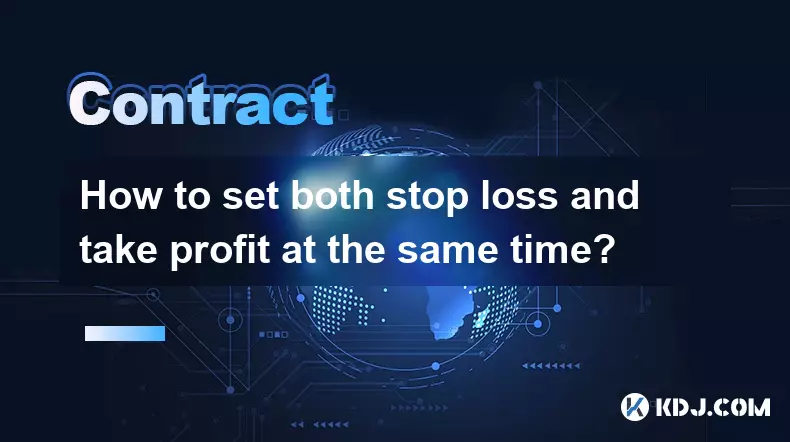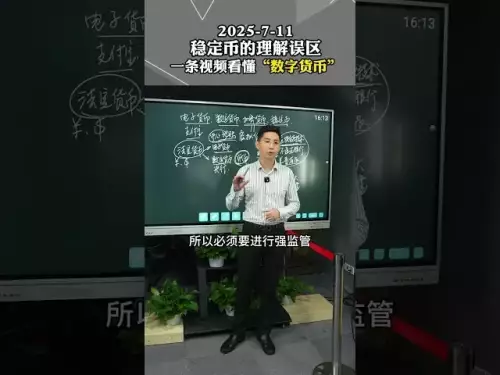-
 Bitcoin
Bitcoin $110700
-0.04% -
 Ethereum
Ethereum $4303
0.15% -
 Tether USDt
Tether USDt $1.000
0.02% -
 XRP
XRP $2.826
0.35% -
 BNB
BNB $866.1
1.08% -
 Solana
Solana $203.1
0.14% -
 USDC
USDC $0.9998
0.01% -
 Dogecoin
Dogecoin $0.2173
0.77% -
 TRON
TRON $0.3291
-0.63% -
 Cardano
Cardano $0.8274
0.26% -
 Hyperliquid
Hyperliquid $46.86
-0.14% -
 Chainlink
Chainlink $22.43
0.80% -
 Ethena USDe
Ethena USDe $1.001
0.03% -
 Sui
Sui $3.379
0.13% -
 Bitcoin Cash
Bitcoin Cash $598.4
-2.09% -
 Stellar
Stellar $0.3583
0.14% -
 Avalanche
Avalanche $24.61
1.59% -
 Hedera
Hedera $0.2195
1.45% -
 Cronos
Cronos $0.2657
-2.64% -
 UNUS SED LEO
UNUS SED LEO $9.588
0.09% -
 Litecoin
Litecoin $113.0
1.49% -
 Toncoin
Toncoin $3.089
0.37% -
 Shiba Inu
Shiba Inu $0.00001237
0.51% -
 Polkadot
Polkadot $3.853
0.42% -
 Uniswap
Uniswap $9.422
1.29% -
 World Liberty Financial
World Liberty Financial $0.2382
29.63% -
 Dai
Dai $0.9999
0.02% -
 Ethena
Ethena $0.7456
1.86% -
 Monero
Monero $267.2
-0.47% -
 Aave
Aave $302.6
0.78%
What is a reduce-only order on Bybit?
Reduce-only orders on Bybit ensure positions are only reduced, preventing accidental increases and enhancing risk control during volatile trades.
Sep 07, 2025 at 12:18 am

Understanding Reduce-Only Orders on Bybit
1. A reduce-only order is a type of order on Bybit that ensures the position size is only reduced and never increased. This functionality is particularly useful for traders managing open positions, especially in volatile markets where unintended liquidations can occur. When enabled, the system will reject any order that would increase the existing position, regardless of the direction.
2. The primary purpose of a reduce-only order is risk mitigation. Traders often use it when closing part of a leveraged position or when they want to lock in profits without accidentally adding to their exposure. For example, if a trader holds a long position of 1 BTC and places a reduce-only sell order for 0.5 BTC, the platform will accept the order only if it reduces the current long exposure.
3. These orders are commonly used in conjunction with stop-loss or take-profit strategies. By setting a reduce-only condition, traders ensure that their exit orders do not inadvertently turn into entry orders due to slippage or incorrect order sizing. This is crucial in high-leverage environments where even small miscalculations can lead to significant losses.
4. It's important to note that reduce-only orders are not standalone order types like market or limit orders. Instead, they are a condition that can be applied to existing order types. Whether placing a limit, market, or conditional order, traders can toggle the reduce-only option to enforce the reduction-only behavior.
5. On Bybit’s interface, the reduce-only option is typically found in the order placement panel, often represented by a checkbox or toggle switch. When activated, the system performs a real-time check against the current position before executing the trade, ensuring compliance with the reduce-only rule.
How Reduce-Only Orders Prevent Unintended Trades
1. In fast-moving markets, price volatility can cause stop-loss or take-profit orders to execute at unexpected levels. Without the reduce-only condition, a trader attempting to close a position might end up increasing it if the order parameters are misaligned with the current position size. This can happen when using trailing stops or partial close strategies.
2. Reduce-only orders act as a safeguard against over-leveraging by blocking any trade that would expand the position. For instance, if a trader has a short position of 2 ETH and mistakenly places a sell order for 3 ETH, the reduce-only function will reject 1 ETH of that order, allowing only the 2 ETH reduction to go through.
3. This feature is especially valuable in cross-margin trading, where the entire account balance is at risk. By preventing accidental position increases, reduce-only orders help maintain margin stability and reduce the likelihood of liquidation triggered by unexpected exposure.
4. Another scenario involves partial profit-taking. A trader may wish to sell half of their long position at a certain price level. Enabling reduce-only ensures that if the market reverses and the price hits the order again, it won’t reopen a short position or add to the long—only the intended reduction is permitted.
5. The logic behind reduce-only is based on net position impact. The system evaluates whether the order results in a net decrease in position size. If not, the order is canceled or rejected during the pre-execution check, depending on the platform’s handling mechanism.
Practical Use Cases in Crypto Derivatives Trading
1. Day traders frequently use reduce-only orders when scalping in high-volatility environments such as during major news events or Bitcoin halving periods. They set predefined exit points with reduce-only conditions to secure gains without risking additional exposure.
2. Position traders managing large leveraged positions rely on reduce-only to execute tiered exit strategies. For example, a trader holding 10 BTC in a long position might place multiple limit sell orders at different price levels, all marked as reduce-only, to gradually close the position as the market rises.
p>3. Arbitrageurs and algorithmic traders integrate reduce-only logic into their bots to ensure that closing legs of a trade do not result in unintended directional bets. This is critical when managing multiple concurrent positions across different contracts or expiries.
4. During periods of extreme market stress, such as flash crashes or pump-and-dump scenarios, reduce-only orders help traders maintain control. Even if stop orders are triggered at unfavorable prices, the reduce-only condition prevents the system from escalating the position size due to erroneous inputs.
5. Traders using grid bots or martingale strategies on Bybit often enable reduce-only on their exit orders to prevent compounding losses. This ensures that each sell order in a downtrend only reduces the position, never adding to it, which aligns with disciplined risk management.
Frequently Asked Questions
Can a reduce-only order be filled partially?Yes, a reduce-only order can be partially filled as long as the executed portion reduces the position. Any part of the order that would increase the position is rejected by the system.
Does reduce-only work with both long and short positions?Yes, the reduce-only condition applies equally to both long and short positions. It ensures that a long position is only reduced by sell orders and a short position by buy orders.
Is reduce-only available on all order types on Bybit?Reduce-only can be applied to limit, market, and conditional orders. It is supported in both perpetual and futures contracts across Bybit’s trading interface.
What happens if I disable reduce-only after placing the order?Once an order is placed with reduce-only enabled, the condition remains active until the order is canceled or fully executed. Changing the setting afterward does not alter the behavior of existing orders.
Disclaimer:info@kdj.com
The information provided is not trading advice. kdj.com does not assume any responsibility for any investments made based on the information provided in this article. Cryptocurrencies are highly volatile and it is highly recommended that you invest with caution after thorough research!
If you believe that the content used on this website infringes your copyright, please contact us immediately (info@kdj.com) and we will delete it promptly.
- Pepe Coin's Moon Potential Fading? Altcoins Like Remittix Steal the Show
- 2025-09-07 08:25:15
- Riding the Crypto Wave: WLFI Token Hype vs. ZA Miner's Cloud Mining Daily Profits
- 2025-09-07 08:45:13
- Meme Coins: 100x Forecasts and the 2025 Outlook – Are We There Yet?
- 2025-09-07 08:45:13
- Altcoin Leverage Alert: ENA & Market Data Show Risky Speculation
- 2025-09-07 08:50:12
- XRP, Bitcoin, and the Altcoin Market: A New Yorker's Take on the Crypto Scene
- 2025-09-07 10:30:12
- BlockDAG, Uniswap, and Chainlink: Decoding Whale Moves and Market Momentum
- 2025-09-07 08:55:12
Related knowledge

How to set both stop loss and take profit at the same time?
Sep 06,2025 at 04:36pm
Understanding Simultaneous Stop Loss and Take Profit Orders1. Placing both stop loss and take profit orders at the same time is a standard practice in...

What is copy trading for crypto futures?
Sep 07,2025 at 02:00am
What Is Copy Trading in Crypto Futures?1. Copy trading in crypto futures allows investors to automatically replicate the trades of experienced traders...

What to do if you are about to be liquidated?
Sep 06,2025 at 01:00am
Understanding Liquidation in the Crypto Market1. Liquidation occurs when a trader’s margin balance falls below the required maintenance margin, forcin...

What is an insurance fund on crypto exchanges?
Sep 06,2025 at 03:36pm
Understanding the Role of Decentralized Exchanges in Modern Cryptocurrency Trading1. Decentralized exchanges (DEXs) have emerged as a cornerstone of t...

How to trade Ethereum futures?
Sep 05,2025 at 03:54pm
Understanding Ethereum Futures Basics1. Ethereum futures are financial derivatives that allow traders to speculate on the future price of ETH without ...

What is a conditional order on Bybit?
Sep 07,2025 at 04:01am
Understanding Conditional Orders on Bybit1. A conditional order on Bybit is a type of trade instruction that executes only when a specified market con...

How to set both stop loss and take profit at the same time?
Sep 06,2025 at 04:36pm
Understanding Simultaneous Stop Loss and Take Profit Orders1. Placing both stop loss and take profit orders at the same time is a standard practice in...

What is copy trading for crypto futures?
Sep 07,2025 at 02:00am
What Is Copy Trading in Crypto Futures?1. Copy trading in crypto futures allows investors to automatically replicate the trades of experienced traders...

What to do if you are about to be liquidated?
Sep 06,2025 at 01:00am
Understanding Liquidation in the Crypto Market1. Liquidation occurs when a trader’s margin balance falls below the required maintenance margin, forcin...

What is an insurance fund on crypto exchanges?
Sep 06,2025 at 03:36pm
Understanding the Role of Decentralized Exchanges in Modern Cryptocurrency Trading1. Decentralized exchanges (DEXs) have emerged as a cornerstone of t...

How to trade Ethereum futures?
Sep 05,2025 at 03:54pm
Understanding Ethereum Futures Basics1. Ethereum futures are financial derivatives that allow traders to speculate on the future price of ETH without ...

What is a conditional order on Bybit?
Sep 07,2025 at 04:01am
Understanding Conditional Orders on Bybit1. A conditional order on Bybit is a type of trade instruction that executes only when a specified market con...
See all articles





















![Daily Level for 9/7/2025: Momentum by EnenzoGD (WITH COIN) [GD Daily Video #809] Daily Level for 9/7/2025: Momentum by EnenzoGD (WITH COIN) [GD Daily Video #809]](/uploads/2025/09/07/cryptocurrencies-news/videos/daily-level-momentum-enenzogd-coin-gd-daily-video/68bcd9494f8d8_image_120_90.webp)


































































